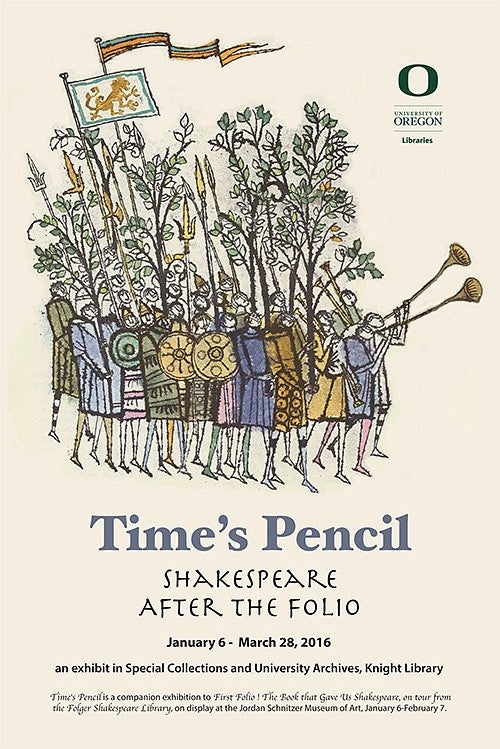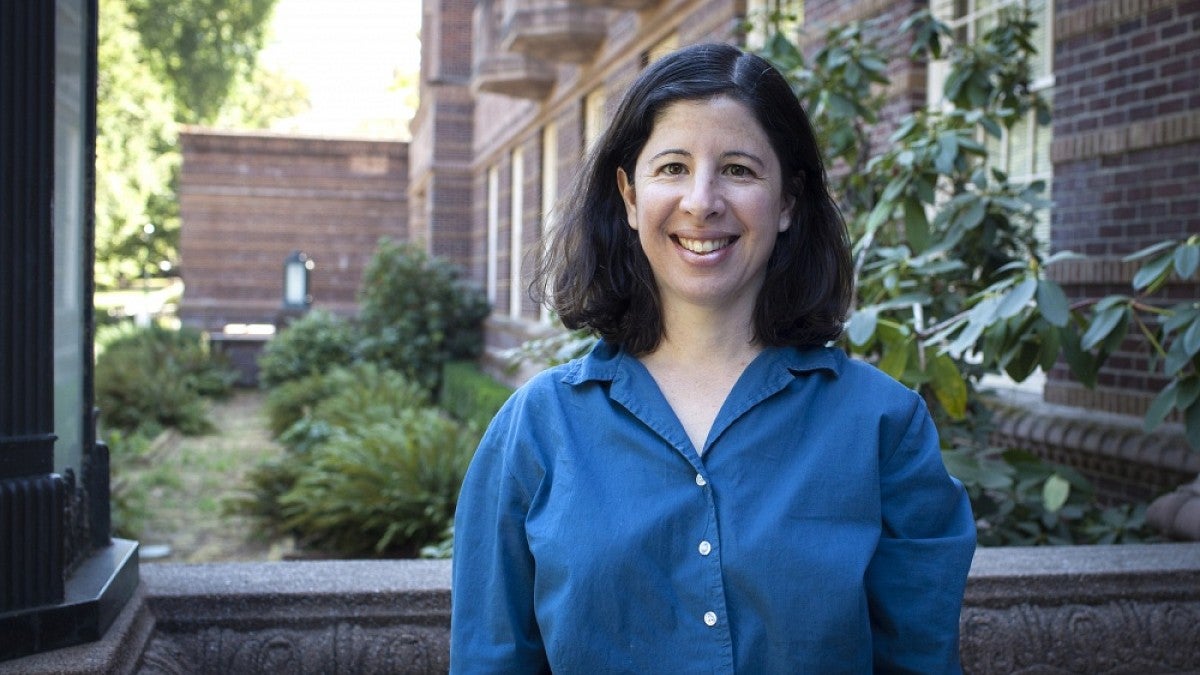Sometimes, it seems, context can mean everything.
Lara Bovilsky, associate professor of English with the University of Oregon, saw that her students often most enjoyed Shakespeare when they were exposed to the context of his writings — not just the context of his own time, but of how later ages thought about the author and came to value him so highly. Now, Bovilsky has begun to build a set of digital tools that could help to convey this vital knowledge to students around the world, enriching their learning experience and opening Shakespeare’s texts to deeper critical inquiry.
Through a National Endowment for the Humanities-funded grant from the Folger Shakespeare Library in Washington, D.C., Bovilsky has secured the opportunity to make her vision a reality.

The result is “Time’s Pencil,” a suite of tools that enrich the Shakespeare experience by showing how time has shaped his legacy. The name comes from Shakespeare’s Sonnet 16, where the Bard describes “Time’s pencil” as the passage of time that can change how even a beloved person is seen both physically and in memory as the years pass.
“I'm very excited about the grant and we are in production already,” she said. “The 'Time's Pencil' digital tool will be up and running in seven classrooms at three universities (including the UO) during this coming academic year, teaching students how historical and literary changes led to waves of rewriting of Shakespearean texts and produced radically different assessments and uses of Shakespeare over the centuries.”
According to Bovilsky, digital learning tools like 'Time’s Pencil' have a unique and especially vital role to play. “It’s offering a narrative that I think hasn’t been made before for students — and certainly not in this format, which is much more vivid. It really helps students to understand why we are reading Shakespeare, how we came to be so obsessed with Shakespeare, and how his popularity grew, and in that sense his importance grew.”
Her vital partner throughout the project’s development has been the UO Libraries. The library’s Digital Scholarship Center is providing technical expertise in scanning images and building the digital tools. What’s more, the roots of the digital resource can be found in the Special Collections and University Archives, where Bovilsky discovered the wealth of collections materials while making plans for UO’s hosting “First Folio! The Book that Gave Us Shakespeare, on tour from the Folger Shakespeare Library.”
She recalls: “I was reviewing Special Collections’ Shakespeare-related holdings and couldn’t believe how impressive and extensive they were. ... Special collections librarian Bruce Tabb suggested that we create an exhibition in the library. We were able to do something truly special there.”
Mounted in conjunction with the “First Folio!” event at the Jordan Schnitzer Museum of Art earlier this year, the “Time’s Pencil” exhibit at the Knight Library showcased rare books, illustrative engravings, historical photography and theatrical ephemera. Offering a more detailed exploration of Shakespeare’s life and legacy, the exhibit was a hit. Many of the 8,900 visitors who came to the museum to view the Folio also made the short trek across the quad to Knight Library to delve deeper with “Time’s Pencil.”
The idea of digitizing the contents of this successful exhibit proved to be the jumping-off point that lead to the Folger grant. Since then, Bovilsky explains, the project has continued to evolve, and 'Time’s Pencil' will encompass digitized Shakespeare materials from sources as far afield as the British Museum and in languages from Romanian to Xhosa.
“While the archive is being substantially expanded, it will still highlight the heart and soul of the exhibition: the amazing Shakespeare-related materials in UO Libraries’ SCUA.”
—By Jason Stone, UO Libraries


